A decade ago, strength and athletic trainers would have looked curiously at a foam cylinder and wondered, “What is that?” Today, almost all athletic training rooms and most strength training rooms have a range of foam rollers with different lengths and consistencies.
What has happened to make foam rollers become so important? The change is based on our attitude towards massage therapy . We have been slowly moving from an isokinetic and electronic injury care mode to more European-inspired processes that focus on the hands – on soft tissue care. We now realize that massage techniques such as Muscle Activation (MAT) and Active Release Therapy (ART) can do wonders for recovery in the athlete.
Also, we all understand that at the level of an elite athlete: If you want to stay healthy in your sport, get a good massage therapist. For this reason, athletes of other levels who cannot afford this care are beginning to demand some type of soft tissue care.
What does all this have to do with foam rollers? Coaches and fitness trainers have seen the success they experience with various soft tissue techniques, and an obvious question arises here: How can I make these treatments available to a large group of athletes at a reasonable cost? Use the foam rollers.
The president of the National Academy of Sports (USA), Michael Clark, is credited by many authors with exposing the foam roller to the sports medicine community. In one of his early manuals, Clark includes photos of myofascial self-release with a foam roller. The technique was simple and self-explanatory: Grab your foam roller and use your body weight to apply pressure to the areas of pain.
Since then, many of us have discovered more benefits of the foam roller, including injury prevention and improved performance . We have also moved away from the concept of acupressure (pressure on specific points) and now we use it more for self-massage. In essence foam rollers are the poor man’s therapist. Proportional soft tissue work in any environment and now you needed to know its nuances to get the most out of it.
What, how and when
A foam roller is simply a cylindrical piece of extruded hard single-cell foam. Think pool foam rollers, but denser and larger in diameter.
They are also available in a number of densities from relatively soft foam, to newer high density rollers which are much more robust. The more muscularly dense the athlete is, the denser his roller should be. Large, more muscular athletes will work better with a very dense roller while more novice people should use a lower density one.
The application techniques are simple. Clark initially recommended an acupressure concept in which he exerts pressure on specific surfaces of the body. Athletes are prepared to use the roller by pressing on the most sensitive area of the muscle, called the knot. The idea was to allow the user to apply pressure to the area most prone to injuries by rolling over it and reducing the density and excess activity of the muscle.
There is no agreement on when is the best time to ride or how often to ride, but techniques are generally used both before and after a workout. In this way, before training you promote a decrease in muscle density and a better warm-up, while afterwards you help the muscles to recover from strenuous exercise.
One of the cool things about foam rollers is that you can create a daily routine to use them. In fact, in the book The Trigger Point Therapy Workbook, Clair Davies and Amber Davies recommend a search for muscle knots up to 12 times a day if the pain is very acute.
Explanation of the exercises
Femoral
It is recommended to work them with the feet turned outwards, inwards and pointing forward. Place the roller under your hamstrings by supporting all your weight on it and using your hands to roll it.
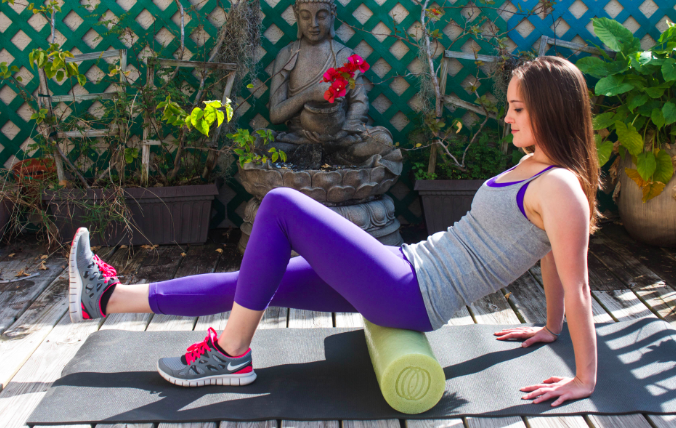
Hip flexor
Support the upper part of your thighs on the roller and roll them up to the hips with the help of your forearms. Try different inclinations as with the femoral.
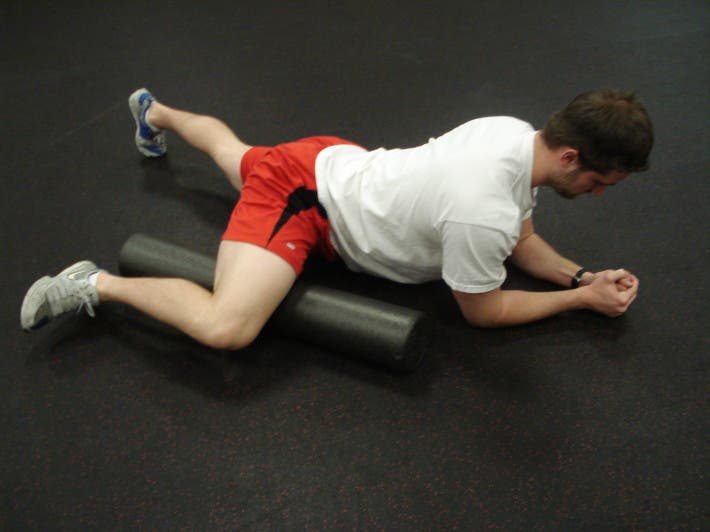
Fascia Latae and Illiotibial band
We lie on our side on the roller just below the pelvis and roll it until it reaches the knee. You can increase the load by supporting one leg on the other. This is the most painful movement for most users.
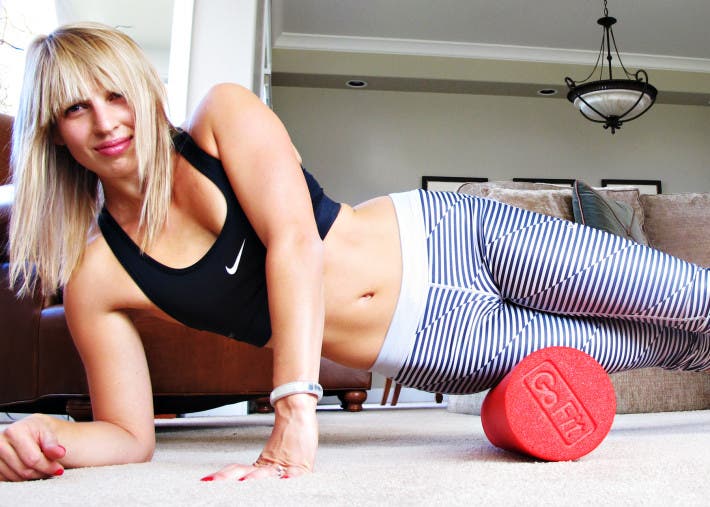
Abductors
Balancing on your forearms, place the upper part of your thigh on the roller and roll it up to the top of the knee towards the inside of the thigh. While doing this movement you work the vastus medialis somewhat.
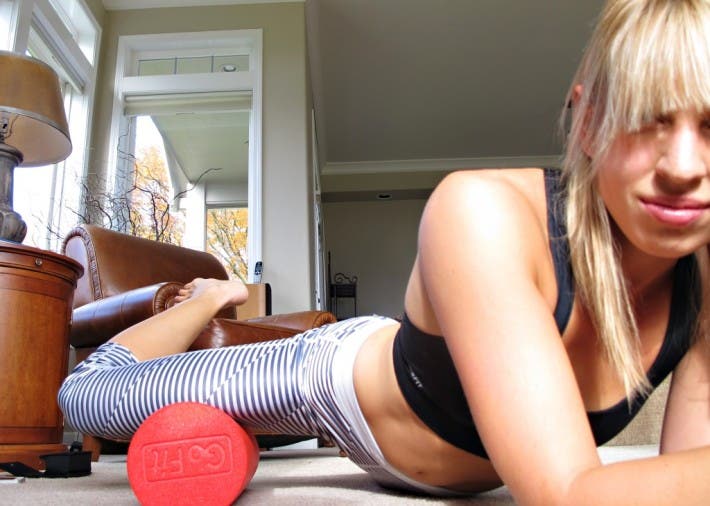
Quadriceps
It is similar to that of the hip flexors, but this time we will be parallel to the ground and roll lower.

Gluteus medius and piriformis
Lie on your side with the densest part of your lateral glute on the roller. And balancing yourself with your leg on the ground, roll down the side of your glute.
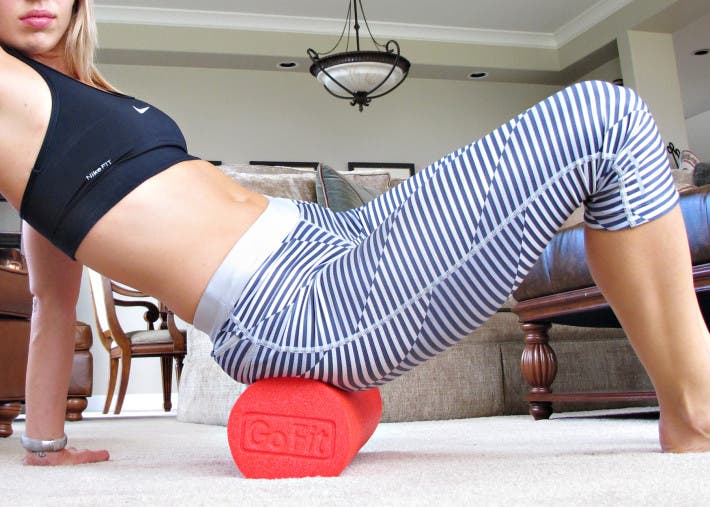
Gluteus maximus
The same position as when doing hamstrings but supported by the gluteus, roll it in the same way.
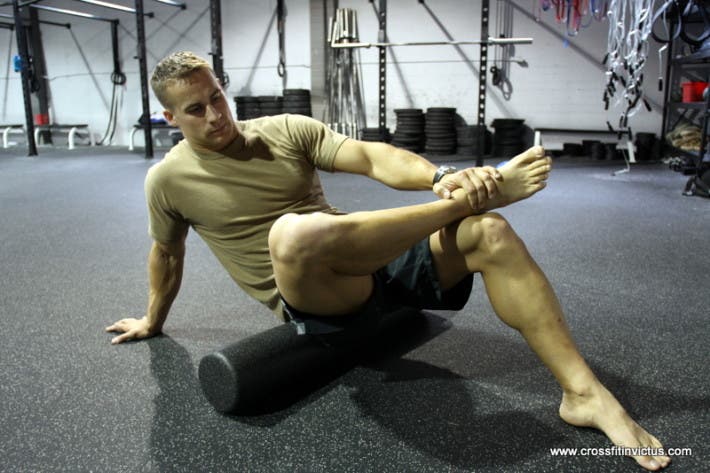
Twins
In the same way as in the hamstrings and buttocks but this time from the lower part of the knee to the ankles. Try different angles by changing the inclination of your feet.

Anterior tibial
Same as the quad work position but rolling it through the shins.

Peroneal
As in the Illiotibial work but in this exercise you roll from the lower part of the knees to the ankles.

Thoracolumbar fascia
Place your arms on your chest, lie on the roller placing it in the middle of your back. Lift the glute and roll from the scapulae to the pelvis.
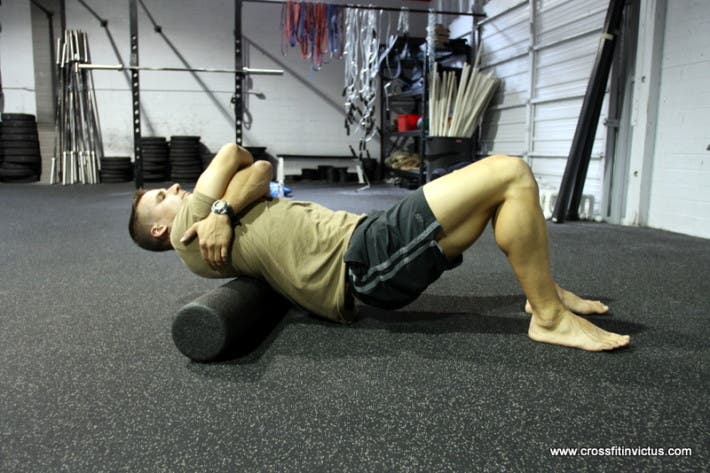
Thoracic, trapezius, and rhomboid extensors
With your arms behind your head, lie on the roller and roll from the middle of your back to the height of the traps.

Dorsal and teres major
Lie on your side with the arm on the side to be pressed stretched out and roll it over the armpit area, where the dorsal meets the humerus.

Triceps
Start in the same position as your lats and roll up to the top of your triceps, near your armpits.

Pectoralis major and the Anteri toides or
Face down, place the roller at 45 degrees with the sternum. And with the arm inclined about 135 degrees with the sternum roll it over the armpit.
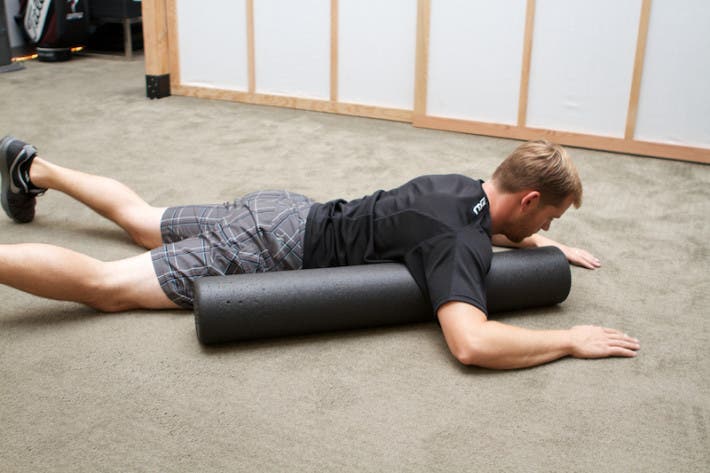
Evaluation
Foam roller massage is hard work that can border on the painful. A good massage job, in this case self-massage, can be uncomfortable, as can stretching. Therefore it is important that you learn to distinguish between a good level of massage that helps us in our sport from a discomfort that can lead to injury.
After finishing the roller session, the user should feel better, not worse, and the rollers should never cause bruising.
Roller vs Massage
The question always arises: “Which is better, massage therapy or a foam roller?” The answer is obvious, a massage is better than the roller since the hands of the expert have the ability to feel so they can better go where you need to. The problem with these is their cost, so the roller is a great solution to this problem since for a low price you always have a self-massage session with you to help you in your workouts.
Sources:
Feel Better for 10 Bucks
Using Foam Roller by Michael Boyce
